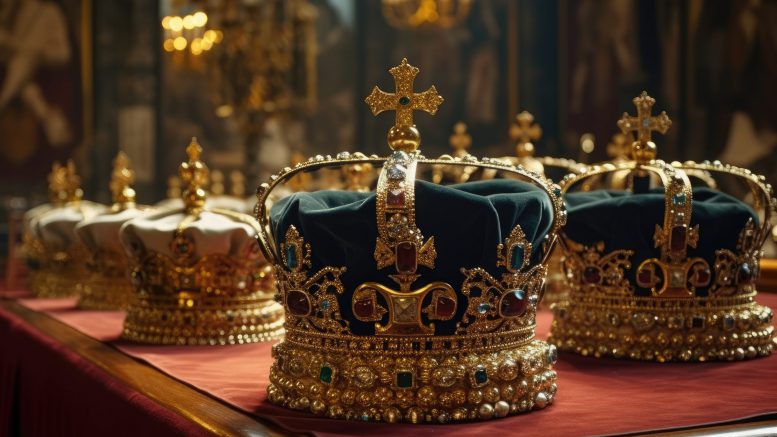By now you should have received your invitation to the coronation of Charles III and his wife, Camilla, as king and queen of the United Kingdom and other Commonwealth realms. If you are at Westminster Abbey on May 6 (or watching, having mislaid your invitation) you will see a sparkling parade, but not the Koh-i-noor diamond.
One of the world’s most famous gems, the 106 carat Koh-i-noor (Persian for ‘Mountain of Light’) will not be used by Camilla. Instead, Queen Mary’s crown will be modified using diamonds from Queen Elizabeth II’s personal collection, including three of the stones cut from the largest gem-quality diamond ever found (South Africa’s 3,106 carat Cullinan). This will allow Buckingham Palace to sidestep the controversy surrounding a gem acquired during the age of Empire (with Afghanistan, India, Iran and Pakistan all claiming ownership).
Charles will be the 40th monarch to be crowned at Westminster Abbey since 1066, but this is a slimmed-down version compared with his mother’s lavish ‘do’ in 1953. In a break with tradition, however, Charles is inviting other royals. Crowned heads from Europe will include (according to Tatler magazine); Philippe of Belgium, Anne-Marie of Greece, Grand-Duke Henri of Luxembourg, Albert II of Monaco, Willem-Alexander of the Netherlands, Felipe VI of Spain and Carl XVI of Sweden.
Royalty expected from outside Europe include the kings of Bhutan, Jordan, Lesotho, Malaysia and Tonga, the sultans of Brunei and Oman, and the emirs of Dubai and Qatar. Other royal families will also be represented, for example crown princes Frederik of Denmark, Fumihito of Japan and Haakon of Norway.
Diamonds on show aplenty, no doubt, but not the Koh-i-Noor. Legend says that this stone was mined in the 13th century at the Kollur mine alongside the Krishna River in present-day Andhra Pradesh, India. There is no record of its original weight, but the diamond was one of many stones used in the ornate Peacock Throne of the Mughal dynasty in the early 17th century.
The diamond changed hands between various empires in south and west Asia before Britain’s East India Co. annexed the Punjab in 1849, and gifted the 191 carat gem to Queen Victoria as a spoil of war. The diamond’s lacklustre appearance didn’t amuse the monarch and the stone was re-cut in 1852 (the significant loss of weight was also due to the discovery of several flaws).
Quite apart from the Koh-i-Noor, diamonds have been in the news recently, with investment in a Canadian mine, a price rise, political threats and a record auction valuation.
Rio Tinto has announced plans to spend US$40 million to extend the life of its Diavik mine in the Northwest Territories to at least 2026. The investment is a boost for Yellowknife’s economy, which has relied on diamond mining for decades. Arctic Canadian Diamond Co. also plans to experiment with underwater mining crawlers to extend the life of the neighbouring Ekati mine.
Meanwhile, diamond prices seem to be rising. London-listed Petra Diamonds Ltd. reported a 13% increase in values at its tender during March compared with the previous one in December. Petra’s chief executive officer, Richard Duffy, attributed the increase to a recovery in demand from China, as well as stronger interest from major jewelery brands and a rise in orders for coloured stones. Another London-listed company, Gem Diamonds (owner of mines at Letšeng in Lesotho and Ghaghoo in Botswana), agreed that new demand in the short term was likely to come from China.
As The Northern Miner reported on Apr. 12, Botswana is threatening not to renew a five-decade sales agreement with De Beers if the diamond producer doesn’t offer a larger share of rough diamonds to the state’s gem-trading company, Okavango Diamond Co. De Beers and Botswana jointly own Debswana, which mines almost all of the country’s gems.
This political move comes after the southern Africa nation acquired a 24% stake in Belgian diamond-processing firm HB Antwerp. The company’s co-founder, Rafael Papismedov, was quoted by the Financial Times as saying that a revised deal would help Botswana “break free” from the current ‘colonial’ model that says you can only dig and wash diamonds. HB Antwerp recently opened a new facility in Gaborone that was described by Botswana president Mokgweetsi Masisi as having the potential to be a “game changer.”
Botswana’s gems are in the spotlight because of a rare pink diamond of “unparalleled colour and brightness.” De Beers announced at the end of March that a flawless 10.6 carat diamond, named The Eternal Pink, is expected to be sold at auction in June for over US$35 million. This would be the highest price per carat, US$3.3 million, for a gemstone ever sold at auction.
The diamond was discovered four years ago at Debswana’s Damtshaa mine. The stone, originally weighing almost 24 carats, has been fashioned into a cushion cut to better showcase its colour, described as ‘bubble gum’. Perhaps President Masisi should wear Eternal Pink at the coronation, there could hardly be a better showcase, or colonial statement.
Dr. Chris Hinde is a mining engineer and the director of Pick and Pen Ltd., a U.K.-based consulting firm. He previously worked for S&P Global Market Intelligence’s Metals and Mining division.


Be the first to comment on "The View from England: Famous gems being both flaunted and hidden"